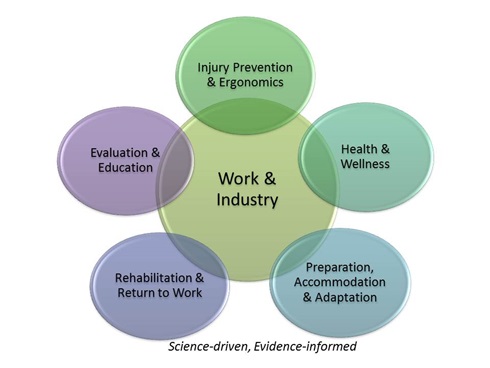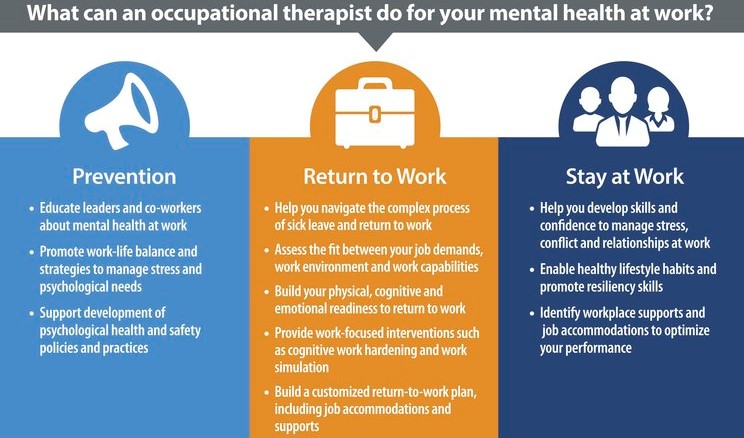The Occupational Therapy Practitioner’s
Role in Work Programs


How Occupational Therapy as a profession contributes to work participation
The distinct value of occupational therapy is to improve health and quality of life by facilitating engagement in occupations. Work is an occupation that includes employment seeking and acquisition, job performance, retirement preparation, and volunteer exploration and participation. Occupational therapy practitioners understand the complex and dynamic interactions of the person, their habits and routines, the work demands, and the context of the work environment. This understanding enables practitioners to develop client-centered interventions to increase health and wellness, prevent disability, and facilitate participation in work activities. Occupational therapy is the only profession that looks at the whole person and provides supports to address client factors (e.g., assistive technology, ergonomics), job demands (e.g., task modifications), and environmental factors (e.g., noise levels, working conditions).
Work is a meaningful occupation that spans nearly all practice settings and populations. Occupational therapy practitioners in all settings should consider the occupation of work for clients from ages 15 to 65+ years. Examples include addressing pre-vocational and job readiness skills in school settings; return-to-work skills in inpatient and outpatient settings; and job accommodations and ergonomic considerations in the workplace.
Occupational therapy practitioners can address work in a variety of environments including, but not limited to:
* Business and industrial environments
* Acute care and rehabilitation facilities
* Mental health facilities
* Sheltered workshops or other vocational programs
* Community settings
* Outpatient clinics
* Hospitals
* Private practice
* Schools
* Public agencies
On-site evaluations and intervention
Referrals come from a variety of sources requesting on-site work evaluation and intervention (e.g., physicians, case managers, other health care providers, workers’ compensation and long-term disability carriers, vocational rehabilitation agencies, and other private or public agencies) for individuals who are beginning work, desiring to remain at work following injury or disease, or returning to work after an injury or disability. These providers may also request injury prevention and health and wellness services for individuals and groups.
Examples of services provided by occupational therapy include evaluating client performance and function; evaluating work demands; identifying injury risk factors; identifying job accommodations and modifications needed to return to work; and providing work transition services, ergonomic evaluation, and injury prevention services.
https://www.aota.org/Practice/Manage/SIS/SISs/WISIS/FAQs.aspx


 .. ….
.. …. ……
……